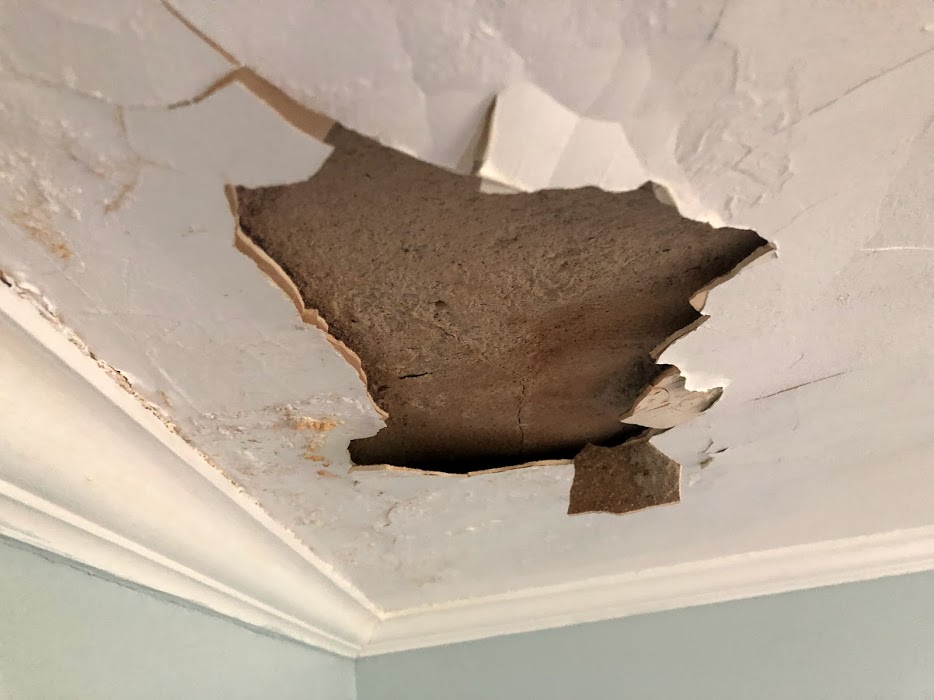You may have noticed that your ceiling is a little strange. Water damage can be silently deadly, especially if the water is in places that are hard to notice like behind your ceiling. Mold can grow on your ceiling or it can collapse if left unattended. There are several ways to detect water damage in the early stages. You can fix your ceiling yourself before calling a professional.
What causes water damage on my ceiling?
There are many reasons why ceilings may become wet. You may find storm damage or shingles that are no longer in place on the top floor ceilings. Another major source of water damage is leaking pipes in the ceiling. Ceilings can be damaged by high humidity inside and outside the home. Bathroom ceilings, for example, are more susceptible to water damage than ceilings of a room with drier air. It’s the same with rooms directly beneath kitchen and bathroom sinks.
You may also have water damage in your ceiling if you experience humid weather or if your sprinkler system, gutters are clogged, your insulation is poor, or a faulty AC unit.
How Much Does It Cost To Fix Water Damage On The Ceiling?
Repairing water-damaged ceilings costs on average $45 to $55 a square foot. This depends on the original ceiling material and finish. If additional plumbing is needed to fix the cause of the damage, it can cost an extra $175 up to $3,000
Materials to repair plaster or drywall ceilings can cost between $2 and $5 per square foot if you do the work yourself. You may decide to replace the plaster ceilings with drywall ones, since plaster is more susceptible to water.
You can tell if your ceiling is damaged by water by the signs that it shows up.
Water damage can be seen by the paint peeling from your ceilings around corners. Brown spots on the ceiling are another sign of water damage. The color can range from a yellowish brown to a dark brown. You may notice that larger stains have a rippled edge.
Mold may be growing if you notice a musty smell or yellow or green spots. This is due to the high levels of moisture trapped behind your ceiling. If you notice obvious cracks and bows on your ceiling, this indicates structural damage that requires immediate attention by a professional.
How To Repair Water Damage On The Ceiling
It is easy to replace and repair a water damaged ceiling. Many hardware stores sell ceiling repair kits that can be used on drywall and plaster. Be sure to assess the damage before you begin. It is better to hire a professional if the area affected is large.
You may have to repair a ceiling first if you need to fix a roof leak or a broken pipe. Always turn off all power and unplug any appliances that are in the area of the water damage before you begin the restoration project.
1. Remove ceilings with water damage
Clean any paint that is peeling or surfaces in need of repair. Use a prybar and putty blade to remove any affected materials. Included in this are the drywall behind and any insulation that felt damp. Wear protective eyewear as well as a mask in order to prevent breathing in dust, mildew, or mold. Use a soft bristle brush to remove visible debris and clean the edges.
2. Examine the damage
Look behind the ceiling. You can feel the pipes for leaks. Repair the pipes first, before you repair the ceilings. Otherwise, water damage will continue to occur. Look for any signs of mold. Professionals will need to remove any mold that is visible and restore the area.
3. Ceilings Damaged? Repair them!
Wait until the entire area is dry before you do anything else. You will only seal moisture behind the new ceilings. Joint compound can also fail if it is contaminated with moisture.
Cut out a drywall piece and place it in the damaged area. Attach boards of two to four inches along the joints for drywall screw surfaces if you’re replacing a large space. Attach the new drywall to the existing ceiling using drywall screws and a drill. Prime and paint the ceiling.
For water-damaged ceiling plasters to be repaired, first replace the damaged board, prime it with oil-based primer and then replaster it. Wait until the top layer of plaster is completely dry, before painting.
How To Prevent Future Water Damage On The Ceiling
Only by identifying the true cause of the water damage and addressing the source can you truly prevent further water damage on the ceiling. You will have to repeat temporary repairs until the structural damage is too severe.
It is important to waterproof your attic, basement and ceilings in order to protect them from humid climates. Insulation will reduce the amount of water that collects during hot or cold days, due to the temperature differences between your HVAC unit and interior.
DIY vs. Hiring a Professional
Technically, ceiling repair is difficult because you’re elevated above the ground. Mold exposure is a possibility with all water damage restoration projects. While DIY water damage ceiling repair isn’t a difficult project, we still recommend hiring a professional company to handle the job.

